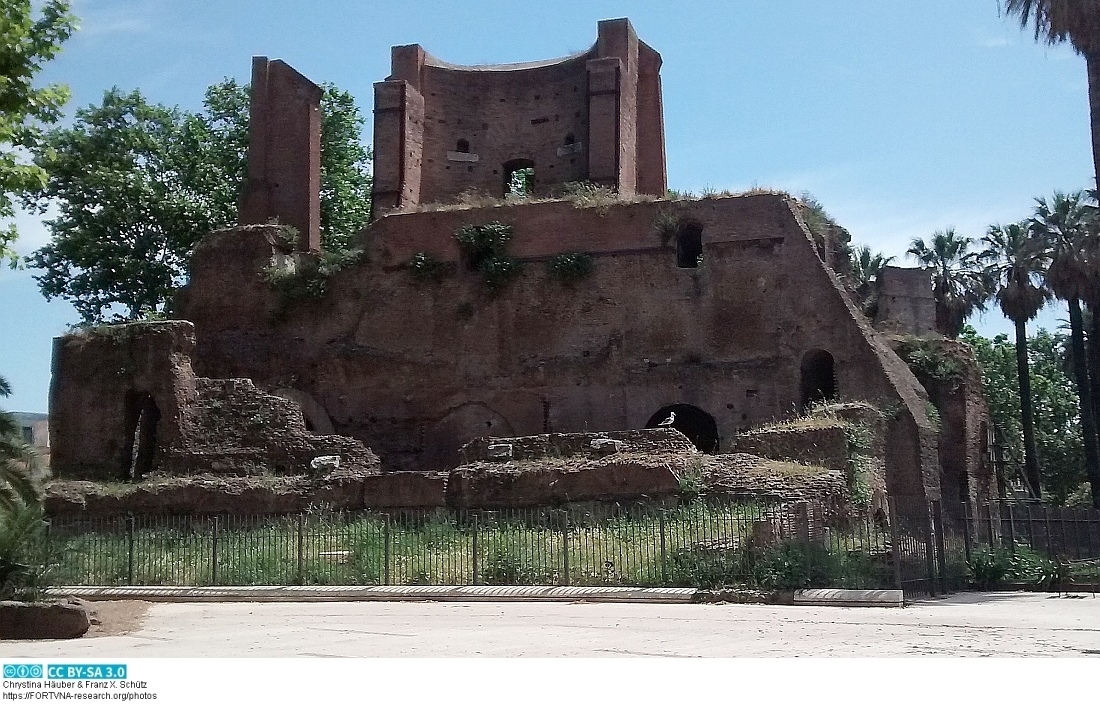

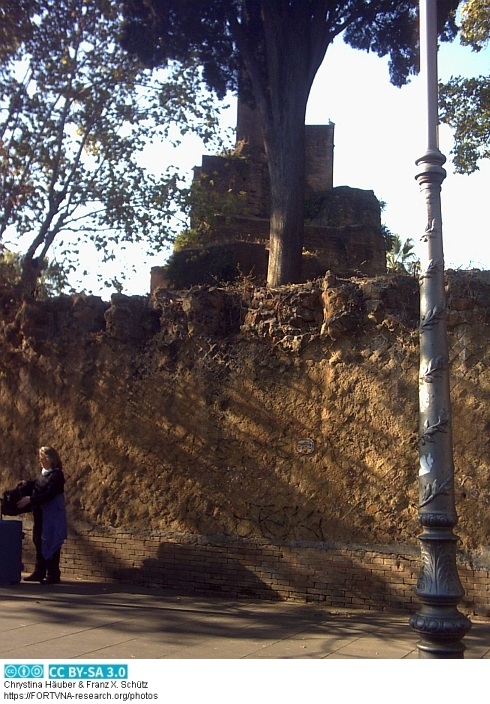
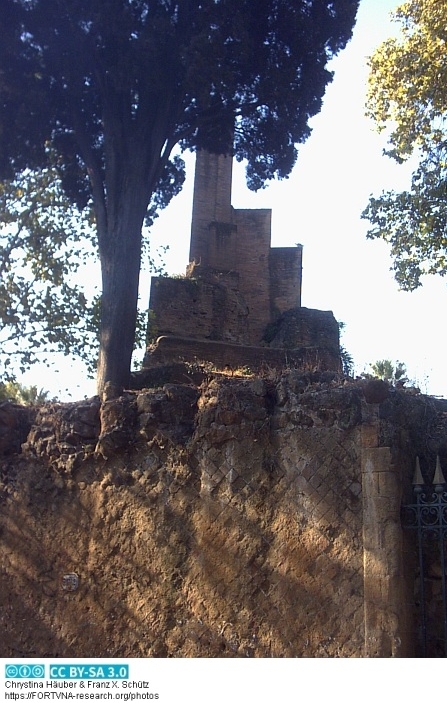
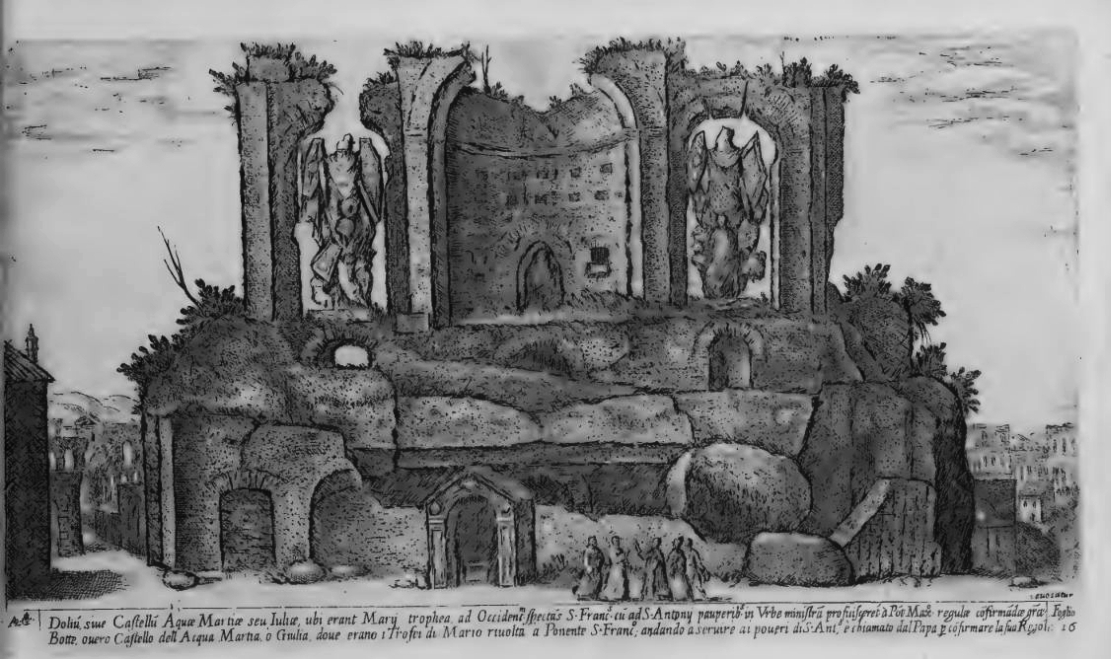
Quelle Abbildung: VEDUTE DEGLI ANTICHI VESTIGJ DI ROMA DI ALO GIOVANNOLI. DIVISE IN DUE PARTI. La prima contiene Mausolei , Archi ; Colonne, e Fabbriche pubbliche,La seconda rapprasenta Terme, Anfiteatri, Teatri, e Tempj. Comprefe in Rami 106. PARTE PRIMA. IN ROMA. [1616]
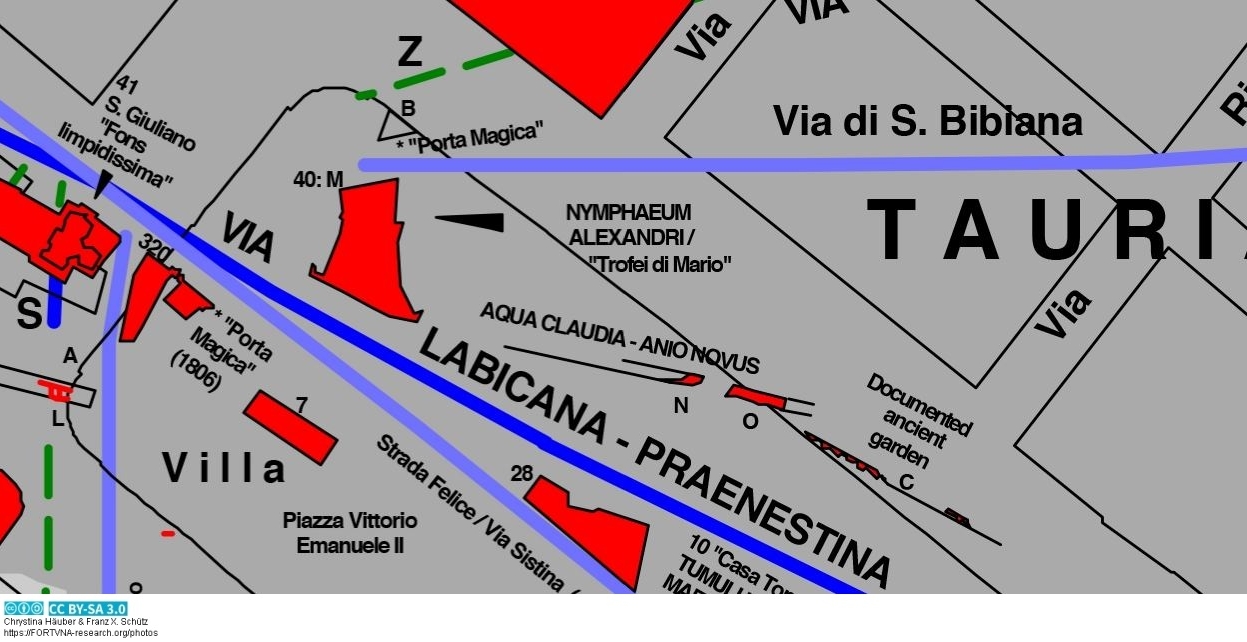
Nach Häuber hat bereits Pirro Ligorio erkannt, dass die zwei kolossalen "Domitianic marble trophies" (vgl. unten), die bis 1590 das "Nymphaeum Alexandri" auf der Piazza Vittorio Emanuele II geschmückt hatten und dann auf die Balustrade der Cordonata zur "Piazza del Campidoglio" gebracht worden sind, seit dem Mittelalter irrtümlich als die von C. Marius errichteten Trophäen bezeichnet wurden.
Vergleiche Text (verändert und ohne Fußnoten) aus: Chrystina Häuber, The Eastern Part of the Mons Oppius in Rome: the Sanctuary of Isis et Serapis in Regio III, the Temples of Minerva Medica, Fortuna Virgo, and the Dea Syria, and the Horti of Maecenas. With Contributions by Edoardo Gautier di Confiengo and Daniela Velestino, 22. Suppl. Bullettino della Commissione Archeologica Comunale di Roma, BullCom, 2014, Roma (<L'ERMA> di Bretschneider). Seiten 326-328:
Beginning with Famiano Nardini (1666), Philo’s remark was considered together with information concerning a domuncula of the Aelii Lamiae (Val. Max. 2, 5, 6; 4, 4, 8; Plut., Aem. 5, 7), which stood close to the Mariana monumenta (cf. infra). Nardini’s proposal was based on two wrong assumptions: first he took it for granted that the Horti Lamiani had developed from the preexisting domuncula of the Aelii Lamiae, and second, he identified the Mariana monumenta with the ‘Trofei di Mario’/Nymphaeum Alexandri, which stands today on the Piazza Vittorio Emanuele II (map 3, labels: Piazza Vittorio Emanuele II; 40; M; NYMPHAEUM ALEXANDRI/“Trofei di Mario”). Nardini therefore came to the conclusion that the Horti Lamiani had been located close to the ‘Trofei di Mario’/Nymphaeum Alexandri. Based on this wrong interpretation of the literary sources, Antonio Nibby (1839) was first to write that the Horti Lamiani had occupied the site of the former Villa Palombara (maps 1; 18; 3, label: Villa Palombara). Earlier, Nibby had suggested a similar location for the Horti Lamiani on the map Roma antica di Antonio de Romanis e Antonio Nibby (1826). But note that on this map his annotation “19 Orti Lamiani” appears outside the Servian wall and west of the ancient Via Merulana, indicating an area which according to current belief undisputedly belongs to the Horti of Maecenas. The reason for this proposal was that Nibby located the Horti of Maecenas outside the Porta Esquilina and to the north of it, and marked it in this map as: “1 Orti di Mecente”. The finds of ‘Horti architectures’ and relevant sculptures dating to the Augustan and imperial periods which occurred to the south of the Nymphaeum Alexandri/‘Trofei di Mario’ in the period ‘Roma Capitale’, led Lanciani on the FUR (fol. 24; map 2, labels: VILLA PALOMBARA; HORTI LAMIANI ET MAIANI) to locate the Horti Lamiani likewise in the area of Villa Palombara. This was followed by Pierre Grimal and has become the communis opinio. The assumption that the find of ‘Horti architectures’ corroborates this location of the Horti Lamiani, is, of course, circular reasoning. Besides, Pirro Ligorio had already recognized that the two colossal Domitianic marble trophies, until 1590 decorating the Nymphaeum Alexandri on the Piazza Vittorio Emanuele II and then moved to the balustrade of the Piazza del Campidoglio, had been erroneously identified since the Middle Ages as the trophies erected by C. Marius. It is likewise known that the domuncula of the Aelii Lamiae was not necessarily in the presumed area of the Horti Lamiani. Nevertheless it has occurred to only a few modern commentators that the ‘Horti architectures’ excavated in the area in question could equally have belonged to another estate. Thus most scholars today still locate the Horti Lamiani where Nibby had erroneously located the domuncula of the Aelii Lamiae. Lawrence Richardson jr. discussed the Mariana monumenta in 1978, and located C. Marius’ temple of Honos and Virtus, which had been a part of it, at the site of the (later) temple of the deified Antoninus Pius and the deified Faustina maior close to the Forum Romanum (maps 5;6, labels: FORUM ROMANUM; AEDES: DIVUS ANTONINUS PIUS ET FAUSTINA). Richardson wrote that the Mariana monumenta was “an area large enough to embrace within its bounds a temple of Febris and the site of the house of the Aelii [i.e. the domuncula of the Aelii Lamiae]… in the precinct apparently were ranged trophies”. These, the real trofei di Mario, after having been dismantled by Sulla, were according to Richardson reerected by Julius Caesar on the Capitolium. More recent commentators are more cautious in reconstructing the history of the two tropaea Marii, but one thing is clear: one of them was reerected by Caesar on the Capitolium. In the meantime, Filippo Coarelli had located the domuncula of the Aelii Lamiae on the Velia (map 3, label: VELIA).
Datenschutzerklärung | Impressum